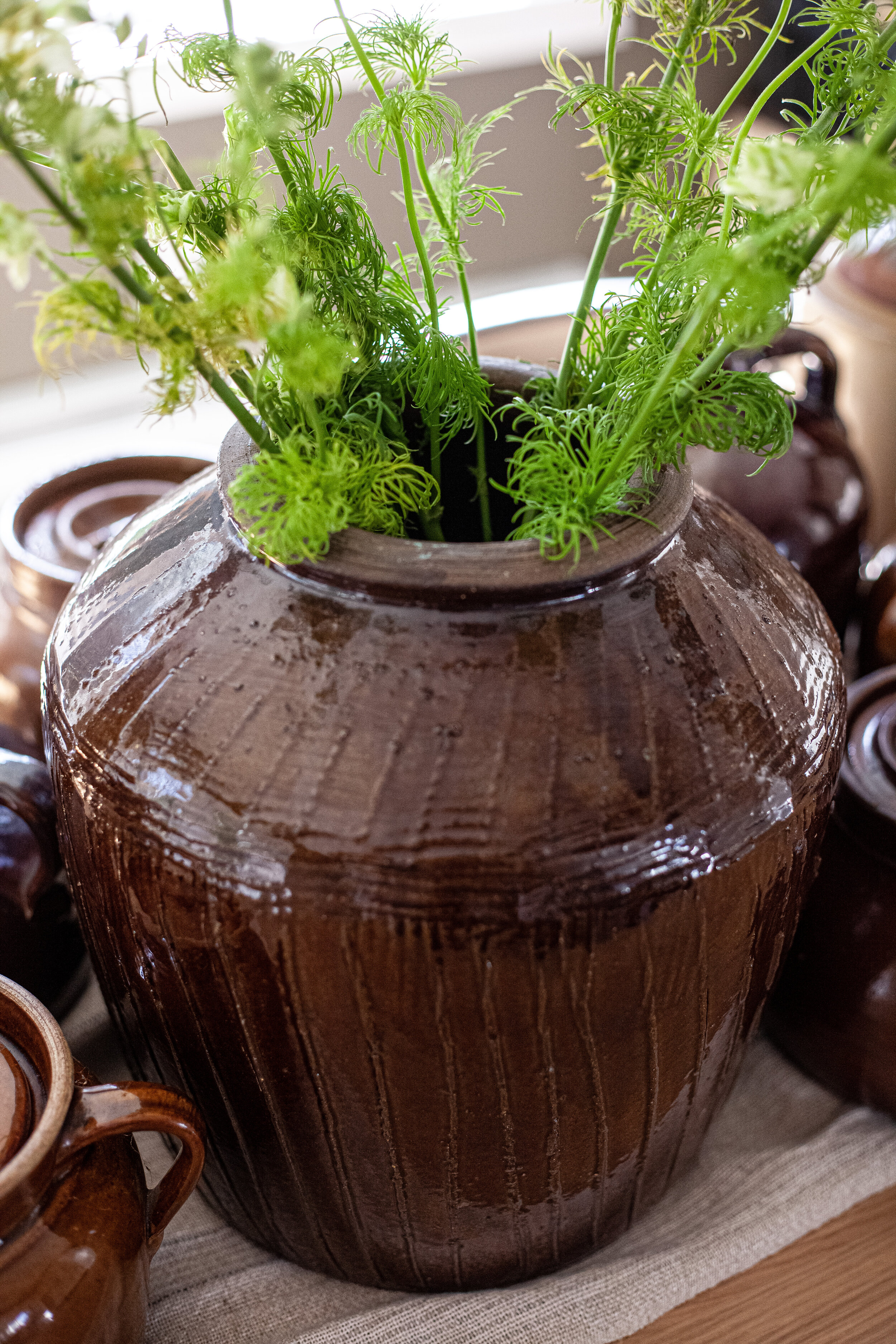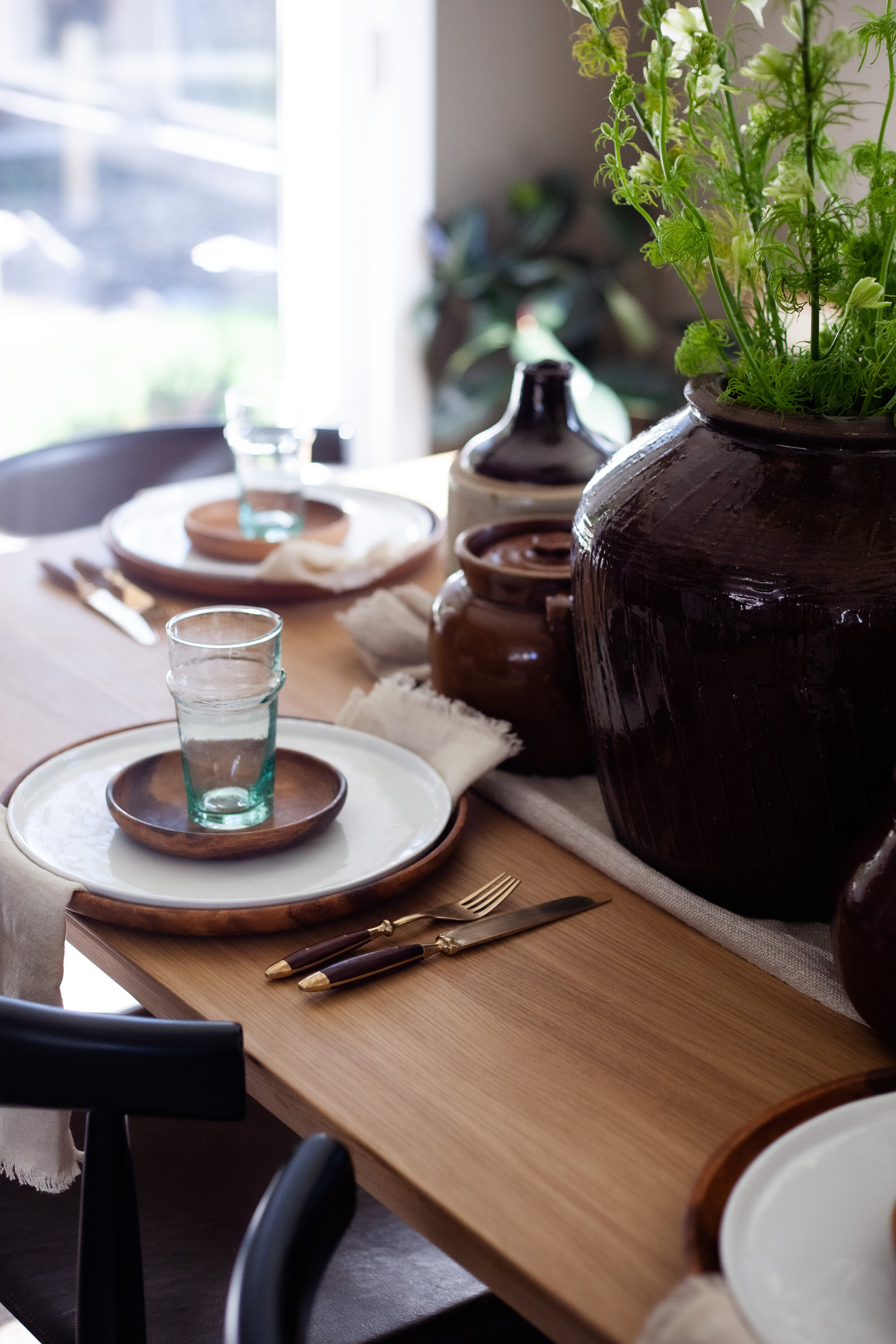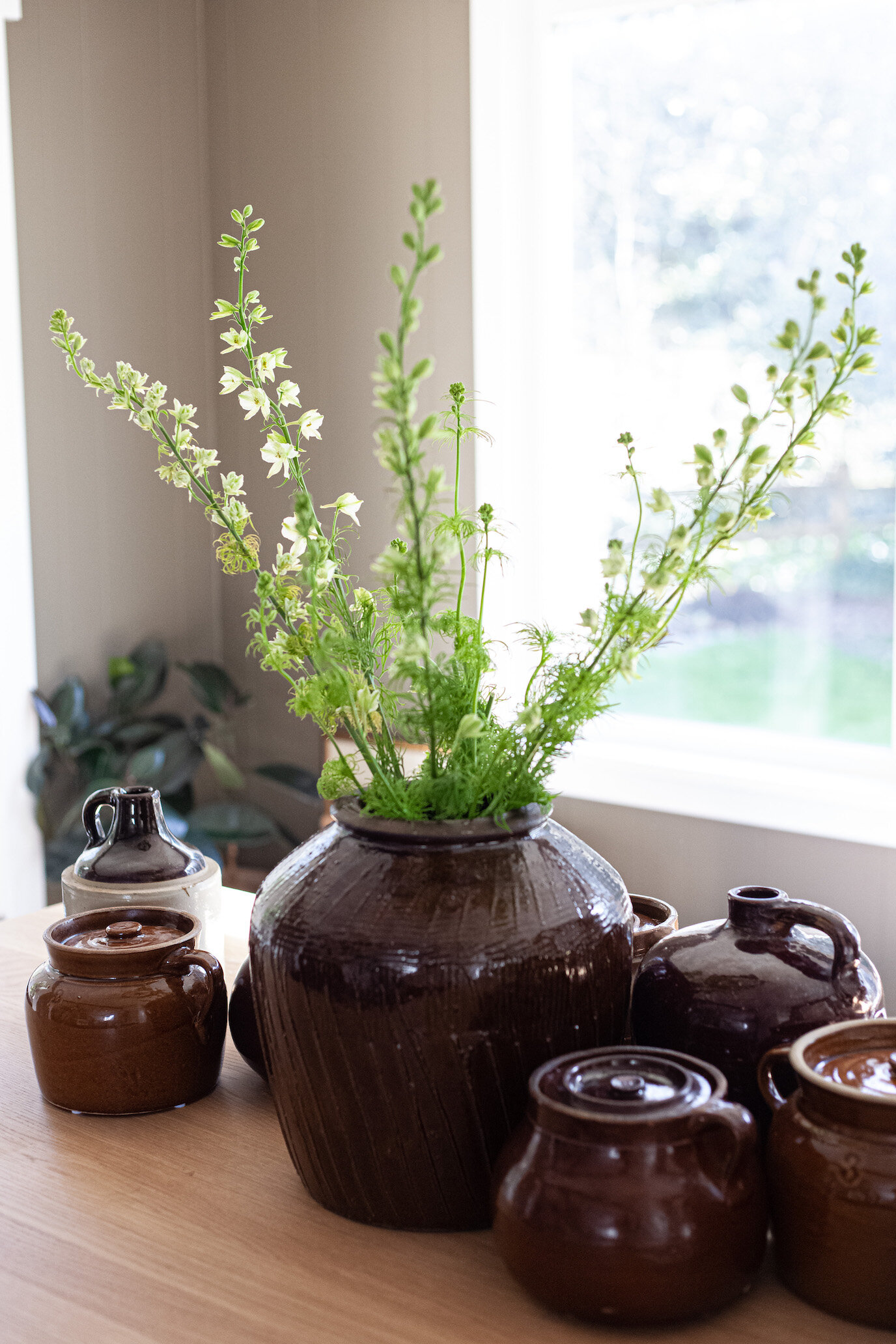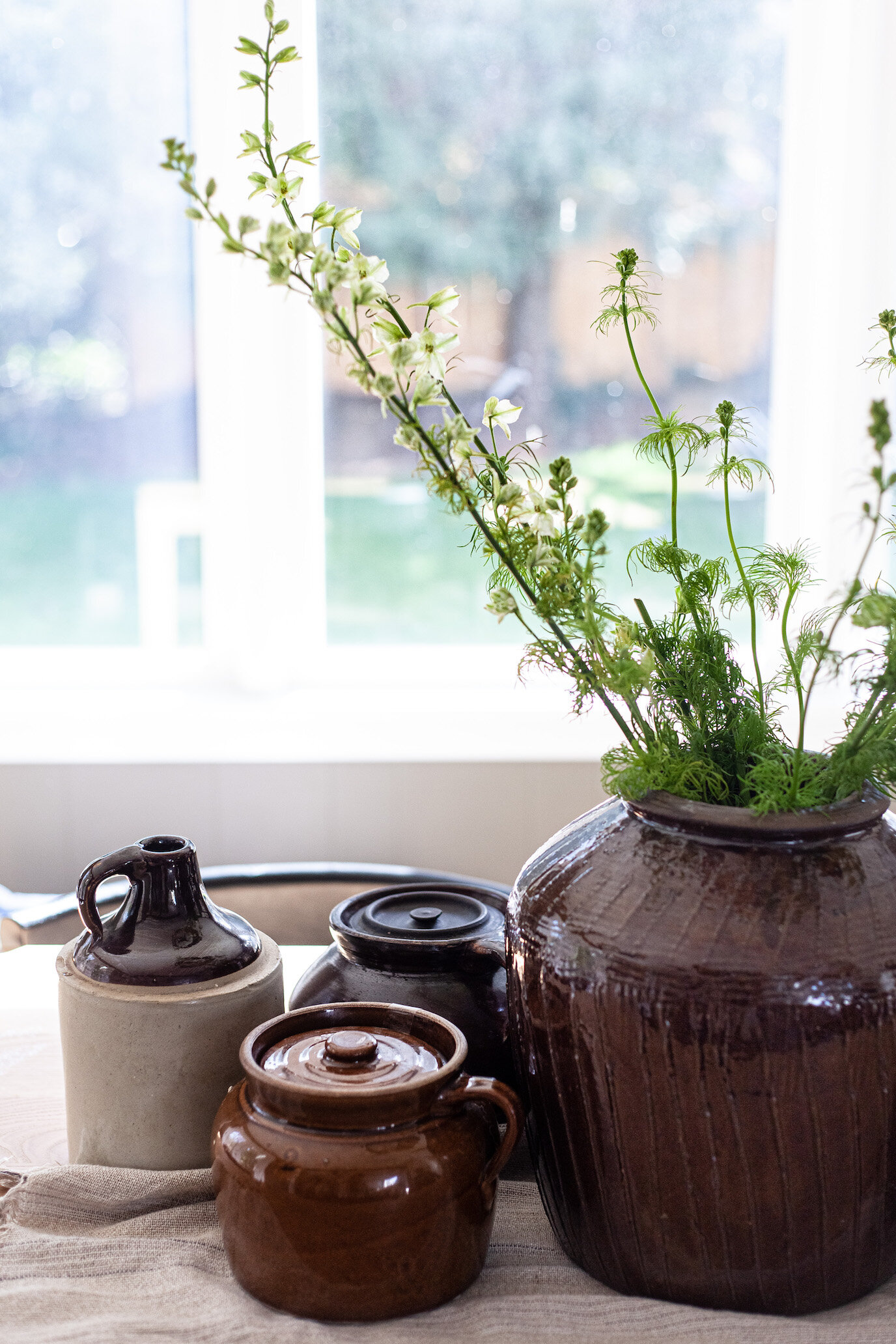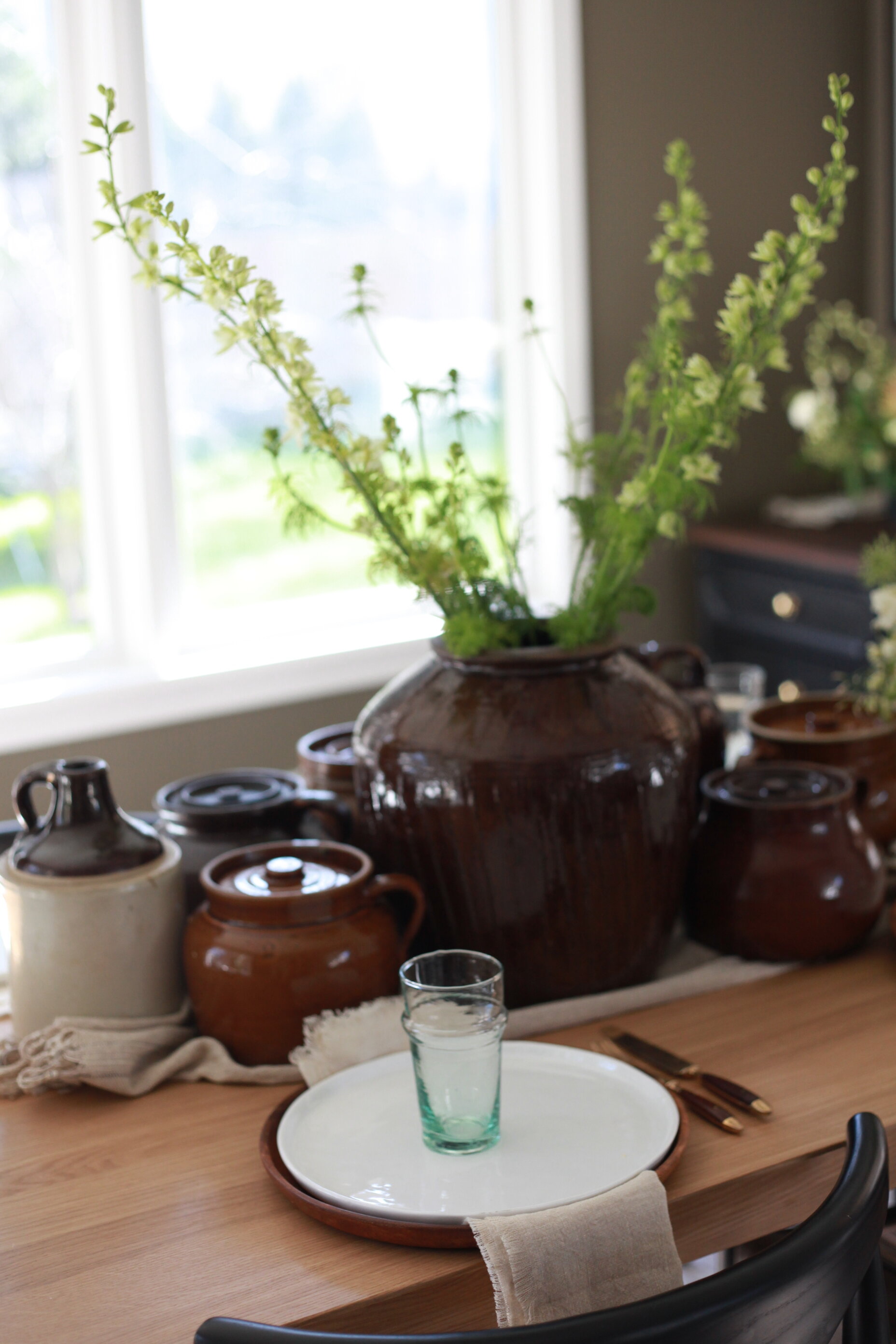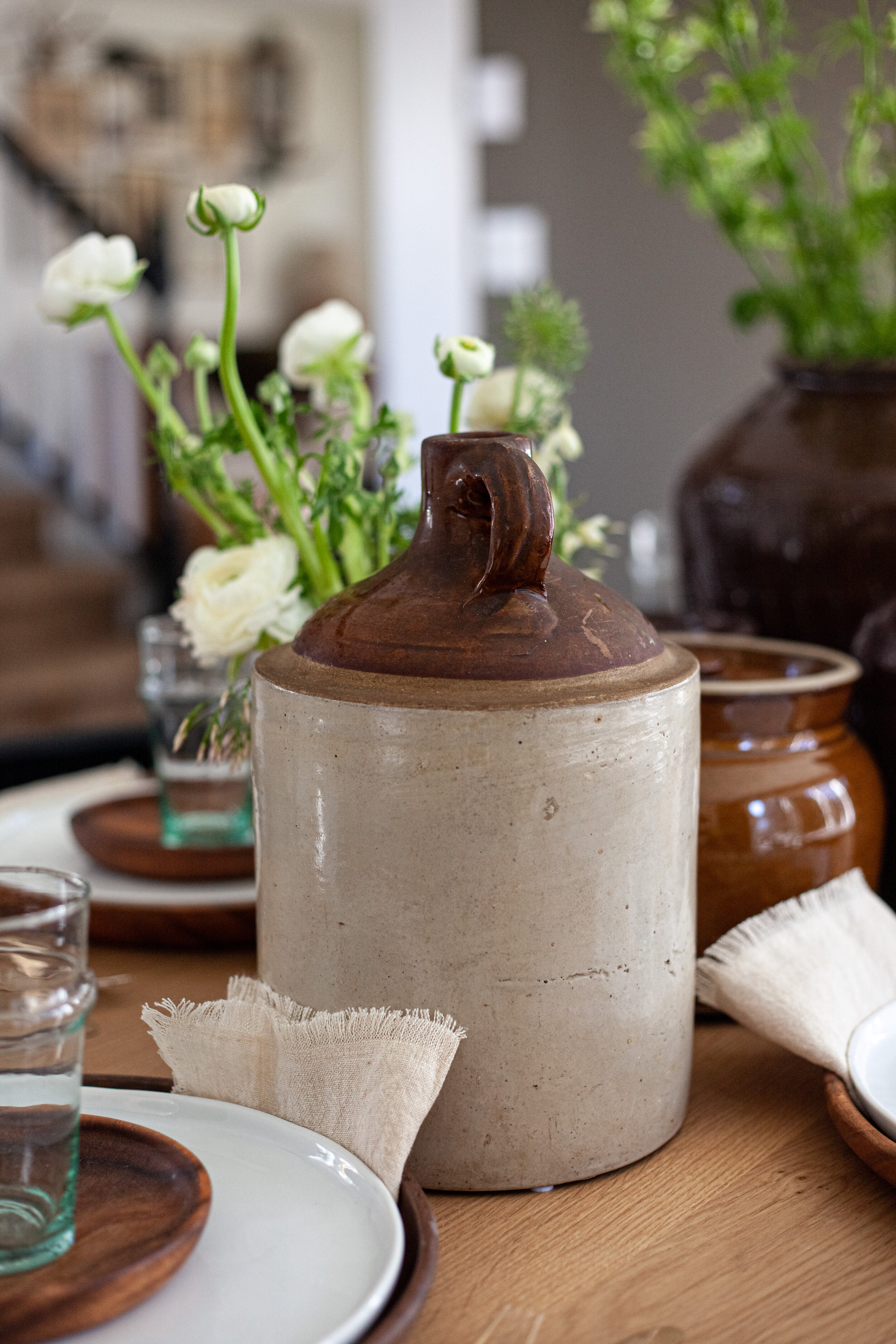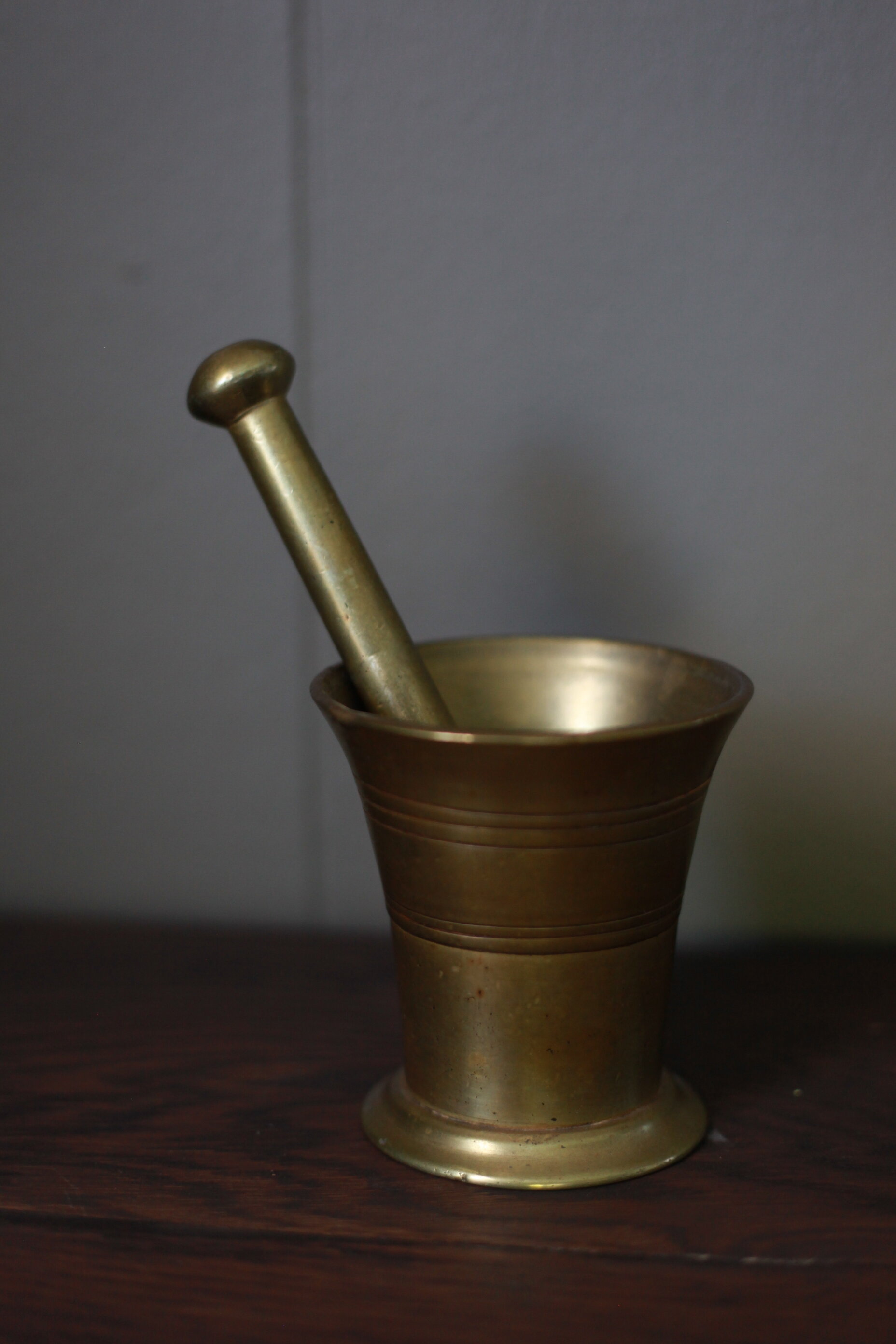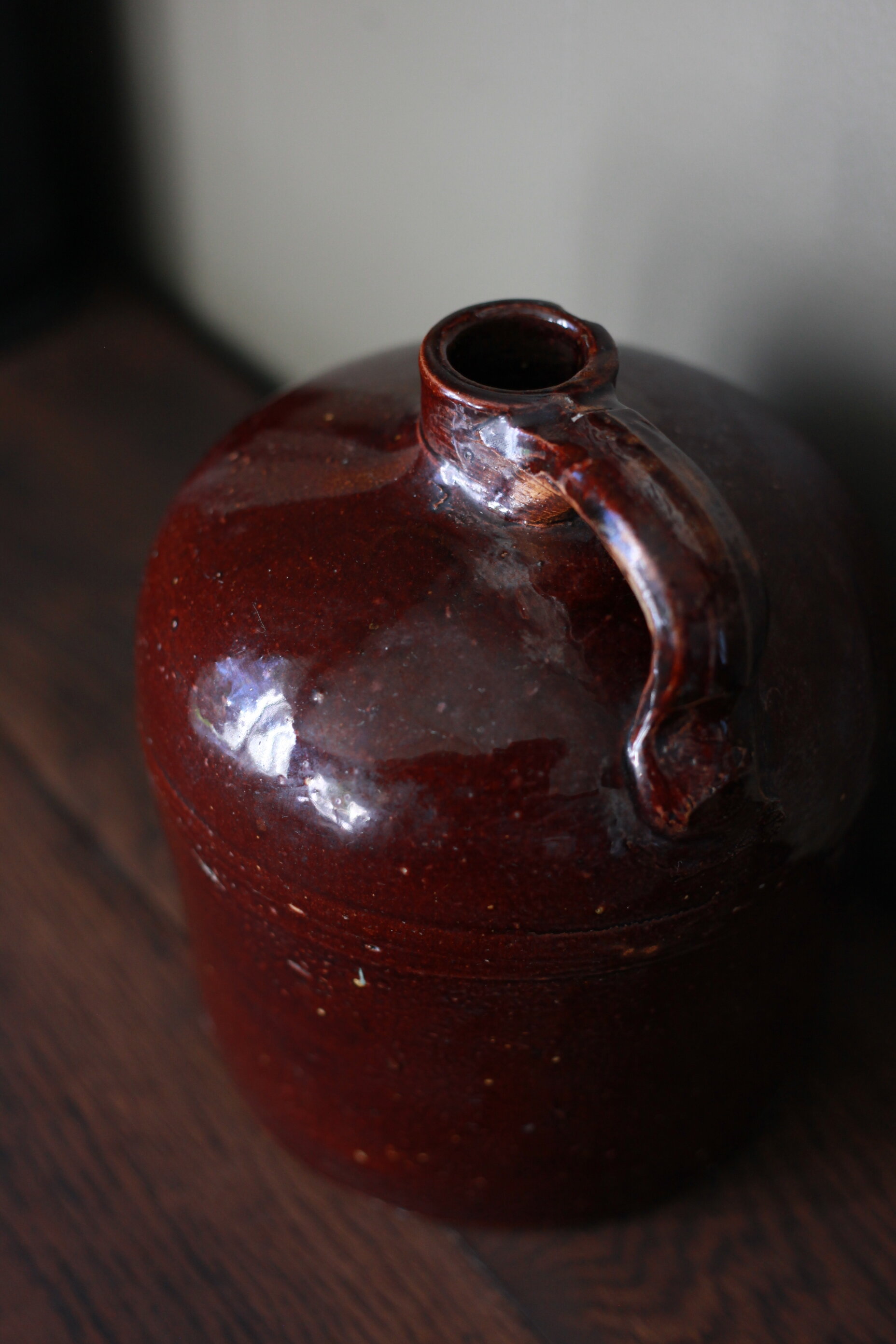It’s no secret that I am big fan (read: huge) of antique and vintage pots and vessels.
With the opening of the shop a couple of weeks ago, I’m all stocked up on all sorts of fun pots and decided to elevate this spring table inspiration some of those found items and I love the way it all turned out.
This pot makes such a statement in the middle of our dining table and even though it’s brown like the rest, the texture and size help separate it from the rest. It’s definitely one of my faves from this week but who am I really kidding? I can’t resist any of this stuff.
I mean, can you even stand this beauty? Perfectly glazed and aged.
I layered some of my staple white dinner plates and acacia wood chargers with these Moroccan glasses and these slubby new stonewashed linen napkins. They are the perfect cream color and create such a warm and calming vibe for this tabletop inspiration.
I thought adding these Moroccan tea glasses would be the perfect complement to the styling of this tabletop and to the flowers in the pots.
This salt glazed jug adds just the right bit of contrast to this spring inspired table.
Because we know no table or dinner is complete without a good story, I thought it’d be cool to share some of the things I learned with you about some of these pieces as I collected them.
I so adore the rich history that these vessels carry and hope that as you explore your own story and design styles, you’ll find that you connect with these pieces in new ways.
VINTAGE JUGS, CROCKS + POTS AND THEIR PAST LIVES
SALT GLAZED STONEWARE
While salt-glazed stoneware probably originated in the Rhineland area of Germany circa 1400's, it became the dominant houseware of the United States of America circa 1780-1890. Americans began producing salt-glazed stoneware circa 1720 in Philadelphia, Pennsylvania, and Yorktown, Virginia. Many of them were used in prohibition for whiskey and other types of liquor at that time.
While salt-glazing is the typical glaze technique seen on American Stoneware, other glaze methods were employed. Vessels were often dipped in Albany Slip, a mixture made from a clay peculiar to the Upper Hudson Region of New York, and fired, producing a dark brown glaze. Albany Slip was also sometimes used as a glaze to coat the inside surface of salt-glazed ware.
CROCKS (U.S.)
The vernacular term "crocks" is often used to describe this type of pottery, though the term "crock" is not seen in period documents describing the ware. Additionally, while other types of stoneware were produced in America concurrently with it—for instance, ironstone, yellowware, and various types of china—in common usage the term "American Stoneware" refers to this specific type of pottery. (Wikipedia, 2021)
xo,
Kennesha
MORE FROM THE SHOP

